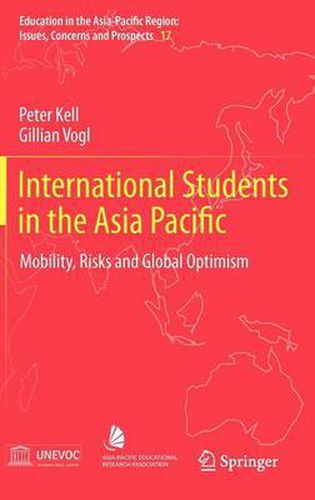Readings Newsletter
Become a Readings Member to make your shopping experience even easier.
Sign in or sign up for free!
You’re not far away from qualifying for FREE standard shipping within Australia
You’ve qualified for FREE standard shipping within Australia
The cart is loading…






This title is printed to order. This book may have been self-published. If so, we cannot guarantee the quality of the content. In the main most books will have gone through the editing process however some may not. We therefore suggest that you be aware of this before ordering this book. If in doubt check either the author or publisher’s details as we are unable to accept any returns unless they are faulty. Please contact us if you have any questions.
This book documents the growing mobility of international students in the Asia Pacific. International students comprise over 2.7m students and it is estimated by the OECD that this will top 8 million in 2020. The great majority of them are students from the Asian countries who study in the Europe, North America and Asia. In addition countries such as Singapore, Malaysia and Hong Kong are becoming education hubs and are proposing to attract international students. Over 42% of international students come from Asia and this is predicted to continue with the strong presence of students from China, India, Korea and Japan continuing. A younger population, a growing middle class and shortages of quality education providers in the Asia Pacific region means that this mobility will be a feature of the future.
This book explores questions around the mobility of international students in the context of the global economy and an increasingly competitive trans-national education market. It also explores questions about the experience of international students principally from the Asia Pacific region at a time of increased global insecurity and growing hostile reactions to foreigners in the post September 11th era. This book emerges from empirical work from several research projects funded by the World Bank and several community projects to support international students. The focus is also on the way in which student mobility promotes growing connection within the Asia Pacific, as well as other regions, and provides the foundations for new notions of global citizenships.
$9.00 standard shipping within Australia
FREE standard shipping within Australia for orders over $100.00
Express & International shipping calculated at checkout
This title is printed to order. This book may have been self-published. If so, we cannot guarantee the quality of the content. In the main most books will have gone through the editing process however some may not. We therefore suggest that you be aware of this before ordering this book. If in doubt check either the author or publisher’s details as we are unable to accept any returns unless they are faulty. Please contact us if you have any questions.
This book documents the growing mobility of international students in the Asia Pacific. International students comprise over 2.7m students and it is estimated by the OECD that this will top 8 million in 2020. The great majority of them are students from the Asian countries who study in the Europe, North America and Asia. In addition countries such as Singapore, Malaysia and Hong Kong are becoming education hubs and are proposing to attract international students. Over 42% of international students come from Asia and this is predicted to continue with the strong presence of students from China, India, Korea and Japan continuing. A younger population, a growing middle class and shortages of quality education providers in the Asia Pacific region means that this mobility will be a feature of the future.
This book explores questions around the mobility of international students in the context of the global economy and an increasingly competitive trans-national education market. It also explores questions about the experience of international students principally from the Asia Pacific region at a time of increased global insecurity and growing hostile reactions to foreigners in the post September 11th era. This book emerges from empirical work from several research projects funded by the World Bank and several community projects to support international students. The focus is also on the way in which student mobility promotes growing connection within the Asia Pacific, as well as other regions, and provides the foundations for new notions of global citizenships.